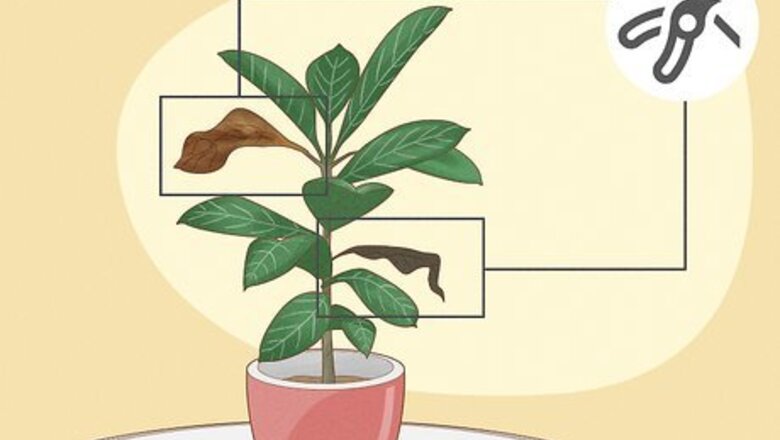
views
Pruning Your Rubber Plant
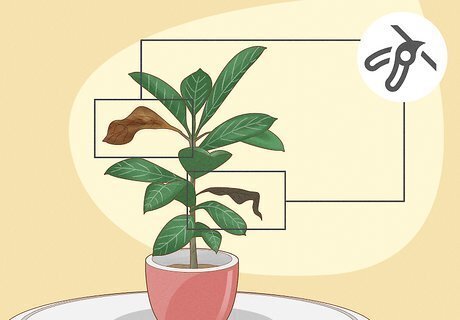
Remove dead leaves and branches at any time of year. As with any indoor plant, remove any leaves and branches from your rubber plant that appear to be dead or dying. This will improve the overall appearance of the rubber plant, and keep the plant in good health. You can remove dead leaves in any season using your fingers. You may need to use a pair of pruning shears to snip off dead branches. Dying leaves will be yellow in color, and may appear saggy or wilted. Dead leaves will be brown, and often shrunken and black.
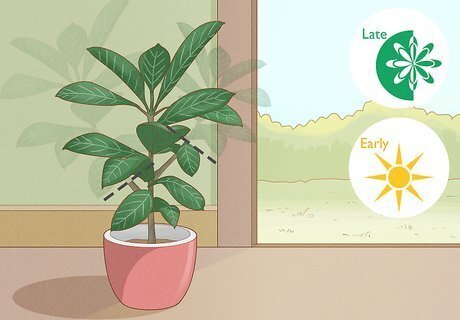
Do any major pruning in late spring or early summer. Rubber plants are generally hearty and will probably not suffer ill effects if you prune them in a different season. However, for the sake of the plant’s health, do most of the pruning around early summer. Major pruning includes any pruning that goes beyond removing already-dead leaves and branches. If you need to prune a rubber plant in winter or fall, restrict yourself to making minor pruning cuts.
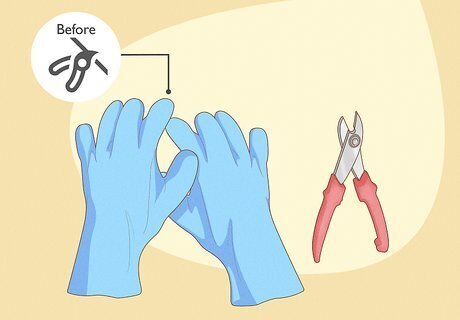
Wear gloves when pruning. The sap of the rubber plant is sticky, and will start to flow from the cuts you make when pruning the branches. To prevent the sticky sap from getting onto your fingers, wear a pair of gloves while pruning. Canvas work gloves would suffice, as would rubber dishwashing gloves.
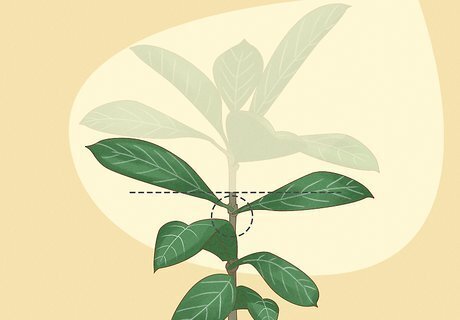
Cut the rubber plant branches just above the nodes. Nodes are the locations where a smaller stem branches out from the side of a larger main stem. So, if you’re pruning a main stem, make the cut just above where a smaller stem branches out. This way, you can avoid damaging the small leaf-bearing stems.

Prune the rubber plant with a sharp pair of pruning shears. These will easily snip through the rubber plant’s branches, and prevent the stems from ripping or tearing. If you have a young rubber plant with thin stems, you could also trim it using a pair of sharp household scissors. In a pinch, you can use a sharp kitchen knife to prune the plant. Unlike other types of plants (like roses) whose branches need to be pruned at an angle, you can cut rubber plant branches straight across.
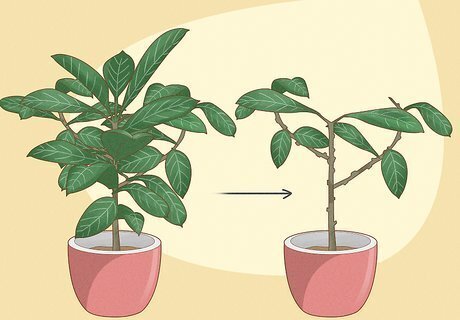
Don’t over-prune the rubber plant. If you prune away too many of the rubber plant’s leaves and branches, it won’t be able to photosynthesize and may die. So, make sure that you always leave at least 2-3 leaves behind. Also keep in mind that it’s easier for the plant to regrow leaves than to regrow branches. Avoid removing more than 5 or 6 living branches in a single pruning session. If you have a large rubber plant, you may need to leave as many as 6-7 leaves behind after a thorough pruning.
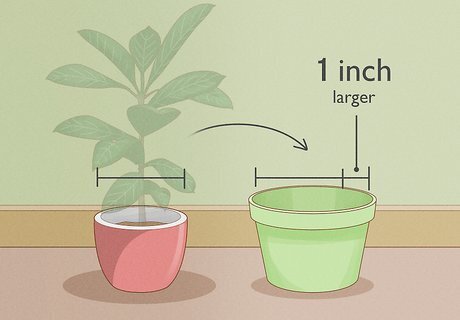
Repot your rubber plant to allow its size to increase. If you’d like to give your rubber plant’s roots more room to expand, repot it in a larger pot. Each time you repot your rubber plant, move it into a pot that’s only about 1 inch (2.5 cm) larger than the previous pot. Also remember to always plant your rubber plant in a pot with holes in the bottom for drainage. Keep in mind that, once its roots have grown, the rubber plant will start growing taller as well.

Propagate your rubber plants with cuttings. If you’d like to start a second rubber plant in a separate pot—or if a friend or family member wants to start a rubber plant of their own—you can do so with a cutting. Snip off a generous cutting, like a large, healthy leaf or a medium branch. Let the wet sap dry, and insert the sappy end of the cutting about 2 inches (5.1 cm) deep in soil. Help the cutting take root by placing a warm heating pad under the pot for the first week.
Shaping Your Rubber Plant
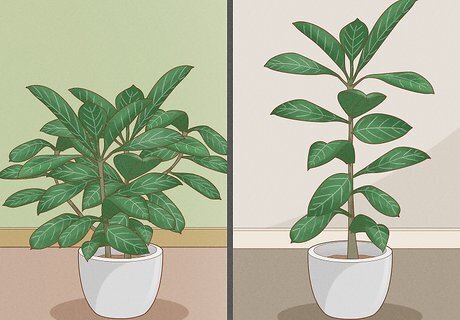
Decide on a shape for your rubber plant. Rubber plants can have 1 of 2 shapes: tall and thin, or short and bushy. Based on the space in which you’re keeping the plant, and your own personal taste, choose which shape you’d like the plant to have. For example, if you have the rubber plant on a shelf without much room to grow upwards, you may want the plant to develop a short, round shape. Or, if you have the plant in a large room with high ceilings, the plant may look better with a tall, slender shape.
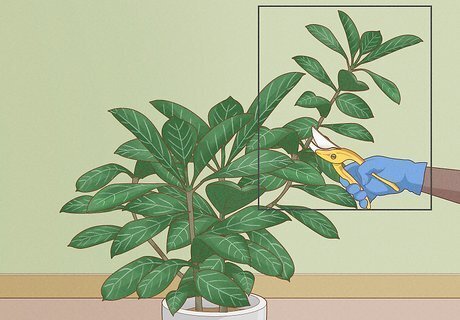
Trim unruly or unsightly branches to keep the plant looking tidy. Since rubber plants are kept indoors, you’ll want the plant to look presentable. If any branches are growing in a strange direction or at a very rapid pace, prune them to enhance the overall appearance of the rubber plant. You can also prune branches or leaves to keep the rubber plant from looking too dense or cluttered, according to your personal preference. Always discard the trimmings into a trash can.

Cut the top off of your plant when it reaches the desired height. Once your rubber plant has reached a height that you’d like to keep it at, prune the top leaves from the plant. This will prevent the rubber plant from putting out any more vertical chutes, and encourage it to grow more horizontally. So, if you’d like a low, bushy rubber plant, try cutting the top off when it’s about 4–5 feet (1.2–1.5 m). Be aware that if you do not cut the top leaf or leaves off of your rubber plant, it will continue to grow. Rubber plants can grow up to 10 feet (3.0 m).
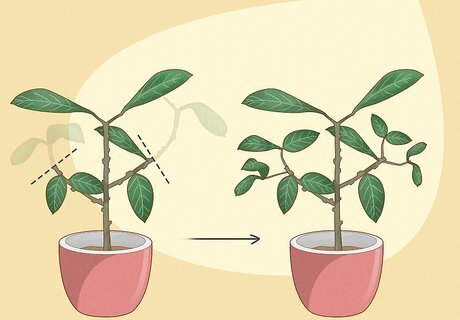
Prune branches often if you’d like a bushier plant. Whenever you prune a branch of the rubber plant, the plant will produce 2 or more new branches from the stump. This makes it easy to make your rubber plant thick and bushy. Keep pruning branches on the side of the plant until it’s become as thick and bushy as you’d like. But, if you want your rubber plant to remain tall and thin, only prune branches when strictly necessary.















Comments
0 comment